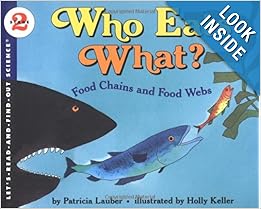Hey y'all!
I have a Must Read Mentor Text to share for Language Arts. It's by one of my favorite authors, Patricia Polacco. :)

My Rotten Redheaded Older Brother Summary from Amazon.com:
"Featuring an obnoxious, freckle-faced, bespectacled boy and a comforting, tale-telling grandmother, this autobiographical story is as satisfying as a warm slice of apple pie. Patricia can't quite understand how anyone could possibly like her older brother Richard. Whether picking blackberries or eating raw rhubarb, he always manages to outdo her, rubbing it in with one of his "extra-rotten, weasel-eyed, greeny-toothed grins." When their Bubbie teaches Patricia to wish on a falling star, she knows just what to ask for. The next day her wish comes true; although dizzy, she remains on the carnival merry-go-round longer than Richard. Her nemesis turns into her hero, however, when she takes a spill and he carries her home. This warmhearted look at a typical family relationship will strike a familiar chord with siblings of all ages."
I love reading this story to my students. Even if they have heard it before, they always get excited to listen again. The touching book seems to connect with all of us. :)
The illustration above is priceless! The little sister is determined to beat her older brother, and he relishes in watching her try.
I used this book with my class this week as we learned about point of view. We pasted in flip flap graphic organizers from our Spring Interactive Notebook Flip Books Pack. We discussed what 1st and 3rd person point of view were, and wrote examples under the flaps. The kids loved the little chicks!
We pasted in another flip book to record the literary elements.
This book also tied in perfectly with our personal narrative unit. We analyzed the author's language and word choice. The students loved how she used similes in her story: "Then an inspired thought comforted me like a fresh breeze on a hot summer day." They also loved her adjectives. Here is one of my favorite sentences: "Richard gave me one of his extra-rotten, weasel-eyed, greeny-toothed grins." I just love the description of his smile. Can't you just see it?! :) I tried to make the smile for my class, and they all just started cracking up...
We've been talking about bold beginnings and excellent endings in our writing, and at the end of the book, one of my kids said, "Wow. That's a great ending. I really like it. I wish more books ended like that." Other kids agreed. We talked about what the student meant, and we realized that we all liked it so much because it wrapped everything up, and it left us with such strong emotions of happiness. The conflict in the story was solved, but the competitive relationship between sister and brother still lingered in a friendly way. Awwww...Such AMAZING writing! I just LOVE her! :)
We will use this book next week too as we review parts of speech in Language Arts. It is filled with amazing adjectives, vivid verbs and adverbs.
I hope this book can become one of your favorites too!
If you would like to see our Spring Interactive Notebook Flip Books that I used with this book, please click here. These flip books work with ANY text! I am actually using them with a Social Studies book about government next week.
This would be a great time to buy this set since we are having a Spring Cleaning sale and everything in our TpT store is 20% off this weekend!!
Have a great rest of your weekend, and don't forget to link up!
Next week's linky- Math

































